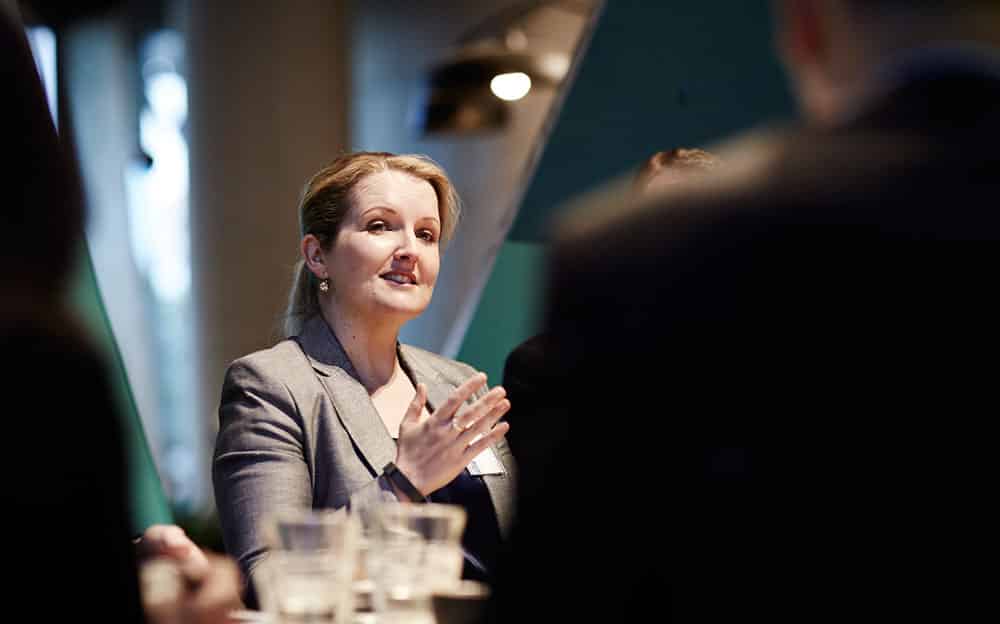5 things leaders can do to create a stressless workplace

- Chronic work-related stress is linked to health issues such as depression and coronary heart disease and directly impacts workplace productivity, retention, job satisfaction, and personal and professional relationships.
- A certain amount of pressure is good for you. When you experience the right amount of challenge and interest, your brain releases chemicals (noradrenaline and dopamine) – making you more alert, motivated and ready to learn.
- However, if the levels are too low or too high, your brain underperforms. Finding this sweet spot is what researchers and educators often refer to as the Goldilocks zone.
It’s the zone of optimal performance where you are working on a task or learning something that is neither too hard nor too easy. Just like the children’s story of Goldilocks and the Three Bears, it is ‘Just right’. So how do you create the environment at work where this can flourish?
- Know the difference
The pressure becomes unhealthy when you feel like you have no control or autonomy, are making little progress and have so much to do that it feels overwhelming. Firstly, be clear on what you can change and what you can’t change at an individual, team and organisational level. It’s easy to spend time focusing on the things you can’t change rather than directing your energy towards those you can change. - Make progress visible
Progress is motivating. Researchers found that when employees see themselves making headway in their job or received support that helped them overcome obstacles, their emotions were the most positive and their drive to succeed was at its peak. However, when goalposts and deadlines keep shifting, it’s demotivating. Set clear goals, responsibilities and ways of working together, and ensure your expectations about workload and deadlines are realistic. Challenge yourself to consider: How are you creating clarity rather than confusion about work, deadlines, dependencies and challenges? - Create Psychological Safety
Create a psychologically safe environment where people feel safe to speak up and be their authentic self. Harvard Professor Amy Edmondson said, “Psychological safety isn’t about being nice. It’s about giving candid feedback, openly admitting mistakes, and learning from each other”. It is knowing your team and leader won’t embarrass, reject or punish you, and where there is mutual trust and respect.
Achieving this starts with you genuinely caring about the welfare of your team. When you do this, you don’t always put your needs first; instead, you consider their needs and take accountability for the impact your actions may have on them. - Leverage purpose and strengths
Role ambiguity breeds disengagement and distrust and heightens stress. It also means that team members can’t leverage each other’s skills as effectively. In contrast, teams achieve more when they have common goals and clarity on how they work together. Research conducted over the last 30 years shows that taking a strengths-based approach leads to greater work satisfaction, engagement, and productivity. This approach starts with understanding each team member’s strengths – both technical and behavioural – and how they are best used at work. The next step is to help your team members appreciate their strengths while recognising and valuing the strengths of their colleagues. Then, when each team member is working optimally and leveraging their colleagues’ strengths, the team’s collective power is harnessed. - Strive to eliminate friction
All organisations have tension points that create friction in the system. Friction causes delays, frustrations and unnecessary stress. Identify the friction points that make work and progress harder than it needs to be. Talk to your team about what’s working and not working, and seek their input on the best ways to accelerate progress and remove barriers. These activities may involve removing bureaucratic processes, reducing duplication and prioritising your team’s efforts on where they can produce the most effective results.
Be open to recognising how and when you may be impeding progress by getting unduly involved and micro-managing. Take the time to build the capability so you can trust your team. When your team works to their strengths, operates together effectively and connects in a psychologically safe environment, the workplace thrives, and progress happens.
Written by Michelle Gibbings.
Bring the best of the CEOWORLD magazine's global journalism to audiences in the United States and around the world. - Add CEOWORLD magazine to your Google News feed.
Follow CEOWORLD magazine headlines on: Google News, LinkedIn, Twitter, and Facebook.
Copyright 2025 The CEOWORLD magazine. All rights reserved. This material (and any extract from it) must not be copied, redistributed or placed on any website, without CEOWORLD magazine' prior written consent. For media queries, please contact: info@ceoworld.biz








